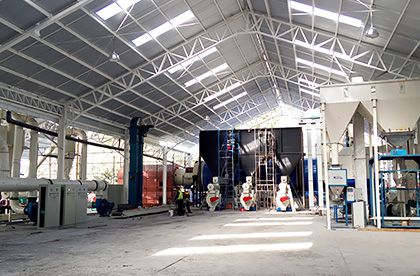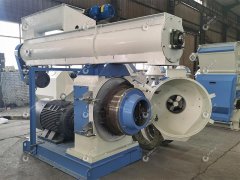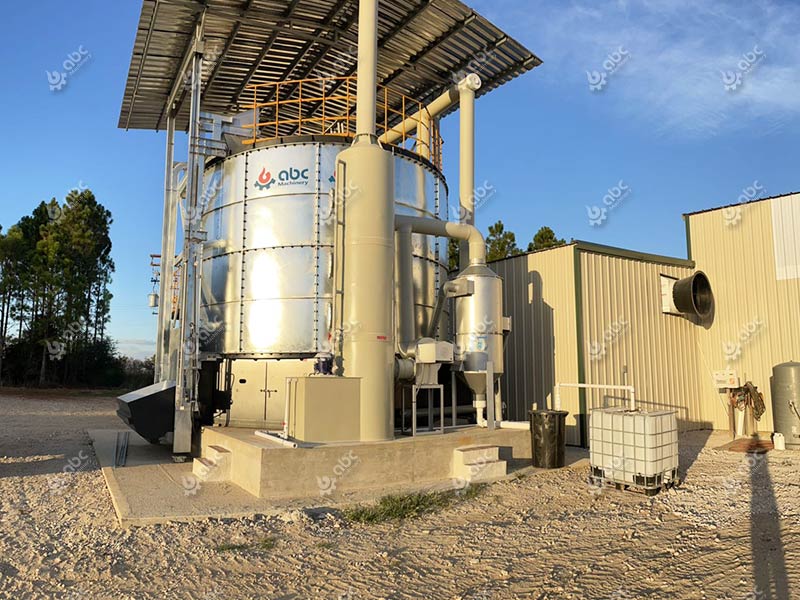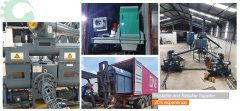Regional Trends in Biomass Pelleting Market Development
The biomass pellet industry is witnessing rapid growth with the increasing global demand for sustainable energy. Countries are gradually recognizing the importance of biomass wood pellets as a clean fuel, which is driving the surge in demand for biomass pellets. Technological advancements, policy support and international trade are creating more opportunities for biomass pellet manufacturers and investors. This article provides an in-depth analysis of the biomass manufacturing market in a number of regions, with the aim of providing valuable advice and insights to global biomass pelleting equipment investors to help them capitalize on this promising opportunity.
- [Japan] Wood Pellet Plant for Sale: Best Deals on Equipment
- [Canada] Benefits of Investing in Wood Pellet Mill Projects
- [Thailand] Low-Cost Wood Pellet Production Line Price and Setup
- [Philippines] How to Reduce Wood Pellet Plant Costs?
- [UK] Why Investing in Wood Pellet Making Machines is Profitable
Overview of Global Biomass Pellet Manufacturing
Biomass pellets are a renewable energy source that is environmentally friendly, energy-efficient, low-emission and cost-effective; they can be used for heating, power generation and as a substitute for fossil fuels in various industrial processes.
Global Biomass Pellet Production: Regional Highlights and Export Trends
- Europe: Europe is the primary production center for biomass pelleting. In 2023, Europe produced approximately 20 million tons of biomass wood pellets, accounting for about 36% of global production. Germany, Sweden, and Latvia are the main producers, with Germany producing around 3 million tons, Sweden 1.8 million tons, and Latvia 1.5 million tons.
- North America: The United States and Canada are significant biomass fuel pellet producers. In 2023, the U.S. produced about 12 million tons of biomass pellets, with approximately 70% exported to Europe and Asia. Canada produced around 4 million tons, mainly exporting to European markets.
- Russia: the production of wood pellets bioenergy has increased significantly in Russia. In 2023, Russia produced about 2 million tons of biomass pellets, which are mainly exported to the European market.
- Asia: China and Vietnam are the main wood biomass pelleting producers in Asia. In 2023, China's production of biomass pellets reached about 10 million tons, while Vietnam produced about 3.5 million tons, mainly exported to Korea and Japan.
Top 5 Biomass Pellets Producing and Consuming Countries
| TOP5 Biomass Pellet Producing Countries | TOP5 Biomass Pellet Consuming Countries |
|---|---|
| United States | United Kingdom |
| Canada | Italy |
| Germany | Germany |
| Sweden | Sweden |
| Austria | South Korea |
Is Biomass Pelleting a Good Investment?
In recent years, the production and demand for biofuel wood pellets have been growing, proving that the biofuel wood pellet production market still has potential. In addition, factors such as lower production costs of wood pellets, competitive biomass pellets prices and government policy support are key to the profitability of biomass pellet production business.

- Low Production Cost of Biomass Pellets: Between $60 and $80 Per Ton
Biomass pellet raw materials such as sawdust and straw cost about $30 to $50 per ton. According to a report by Bioenergy Europe, the production cost of biomass pellets usually ranges from $60 to $80 per ton, including raw materials, labor and energy costs. The biomass pellet production equipment, however, has a service life of more than 10 years and low depreciation costs. Therefore, as long as the cost of biomass pellet machine is controlled, the biomass pelleting mill will have a large profit margin.
- Competitive Selling Price of Biomass Pellets: Between US$100 and US$150 Per Ton
The market selling price of biomass pellets ranges from approximately $100 to $150 per ton. The global biomass pellets market is expected to grow at a CAGR of 7.7% between 2021 and 2031, with a steady rise in selling prices, according to a report by market analyst firm Future Market Insights.
- Multiple Government Introduce Policies to Support the Use of Biomass Energy
Many countries are encouraging the use of biomass energy in order to reduce carbon emissions. For example, the EU's Renewable Energy Directive requires member states to achieve a 32% share of renewable energy in final energy consumption by 2030.
Our company has successful biomass pellet plant project engineering cases in all regions of the world. These cases not only demonstrate the excellent performance of our biomass pellet production line, but also provide valuable references for investors. Our wood pellet production lines have successfully helped investors of wood pellet plants in various countries to make a commercial leap forward with their efficient production capacity and optimized cost-effectiveness. Now, just click the button below and you can get our detailed biomass pellet manufacturing project examples and customized wood pellet production business plans FOR FREE. This information will provide a valuable reference for your decision making and help you to succeed in the biomass energy sector.
What Are the Raw Materials Used for Biomass Pellets?
What are biomass pellets made from? Making biomass pellets utilizes various organic materials, mainly wood, agricultural waste, and energy crops. Often biomass pellet plants mix various raw materials to optimize pellet quality.

Rich Biomass Raw Materials Processing Wood Pellets for Fuel
- Wood Residues: A Key Source in Biomass Pellet Processing
Wood sources include forestry residues, sawdust and wood chips. These materials are by-products of logging and wood processing industries. Due to their high energy content and low ash production, they are a main option for biomass pelleting plants.
- Agricultural Waste: An Ideal Choice for Sustainable Biomass Pellet Manufacturing
Agricultural residues such as straw, corn stover, rice hulls and bagasse are common sources of biomass pelleting. These by-products are produced during the crop harvesting process and provide an efficient way to recycle waste, which not only reduces the impact on the environment, but also provides an abundant and inexpensive raw material for biomass pellet plant production.
- Energy Crops: Efficient Cultivation for Biomass Pellet Making
Energy crops such as willow jacaranda, manzanita and sorghum are grown specifically for energy purposes. Because of their high yields and ability to grow on marginal land, these crops make ideal raw materials for the biomass pelleting industry, which can meet energy needs while promoting sustainable land use.
Empower Your Business with GEMCO: The Premier Choice for Biomass Pellet Project
GEMCO is a professional biomass pellet machine manufacturer with nearly 30 years of industry experience in China. Our company is well known for providing high quality and low cost biomass pellet making equipment. Successful biomass manufacturing plants are located all over the world, including countries such as Australia, New Zealand, Japan, United Kingdom, Vietnam, Malaysia, South Africa, etc. GEMCO's biomass pelletizing machines are not only of high performance, but also of reasonable price, which bring great economic benefits to biomass wood pellet plant investors in many countries. Whether you are a novice investor or an experienced entrepreneur, we can provide you with a customized biomass pellet processing solution to ensure your biomass pellet production business runs smoothly.
Our team consists of experienced engineers and technical experts, who will provide you with professional technical support and after-sales service throughout the process, ensuring that your biomass pellet production line runs stably and efficiently. Choosing GEMCO, you will get the best quality products and the most considerate service. We warmly welcome investors around the world who are interested in biomass wood pellet production to contact us and work together to promote the bright future of green energy.














